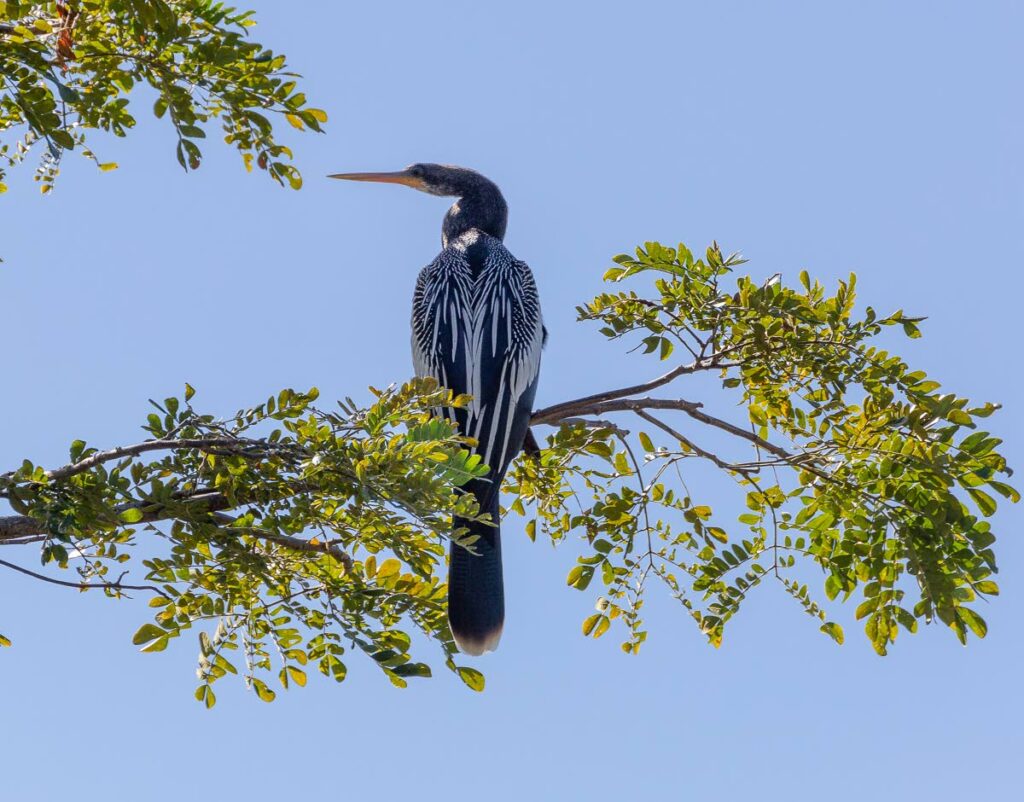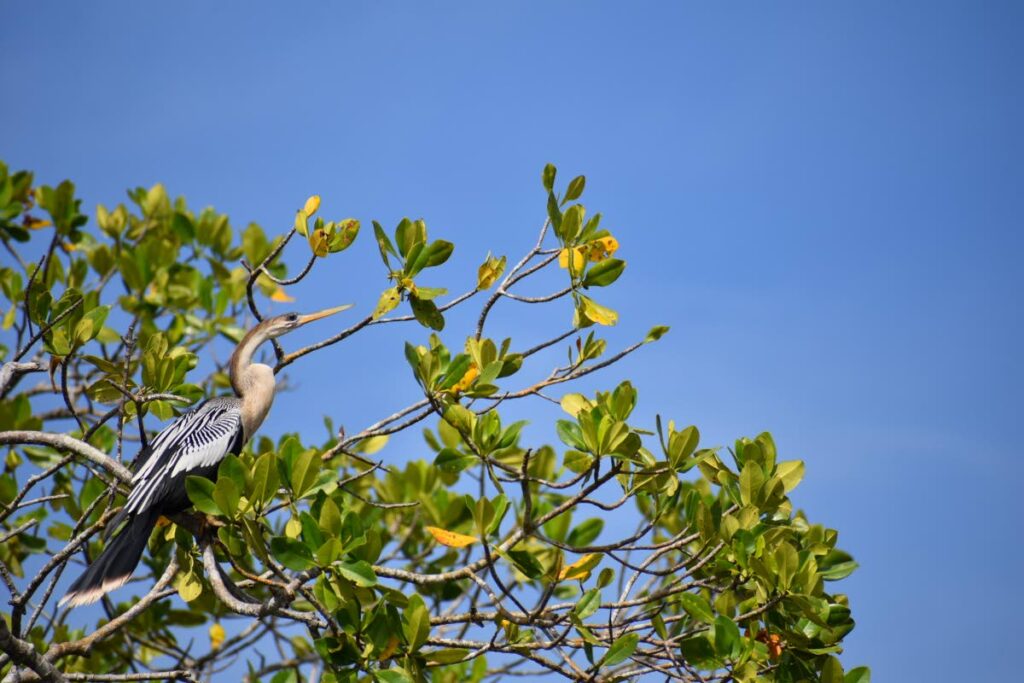Anhinga – the 'snake' that's really a bird

Those who have been on tours at the Caroni Bird Sanctuary may have seen animals they never knew could be found in TT and the snakebird is one of them.
It's called snakebird because of its physique: a long neck which makes makes the bird look like a snake, especially when only its neck and head are in view.
Its scientific name is anhinga, one of the two species of the anhingidae family – the other is the oriental darter which are only found in Asia and southeast Asia.
In Trinidad, the anhingas can be found along the Caroni River but are also seen at the Cunupia River. They are also found in Lowlands, Tobago.

Biochemist Vienna Tirbanie is the founder of Ecosystem Approach Ltd in Felicity, central Trinidad and takes people on tours of the rivers.
She said she's been lucky enough to see the anhingas at least five times since they're a bit hard to spot, even though she spends most of her days on the Cunupia River. Tirbanie hopes to boost the bird's population which she said is depleted, and to also educate people on why preserving the ecosystem is important.
On an a tour with Newsday Kids last month, three anhinga birds were spotted; two were seen hunting for their food in the sea and another was perched on a branch with its wings out to dry. These birds usually swim with their heads above sea water until its time to hunt. They use their long, thin bills like a spear, dive into the sea and stab the fish. They mostly feed on either small or medium-sized fish or crustaceans like small crabs, shrimps or barnacles.
Tirbanie said the anhingas have dense bones that allows them to slowly submerge and capture their prey but because their feathers are not waterproof they are seen in trees where the most sunlight is. Though anhingas can be mistaken for a snake, she said, "They can be found year-round in the wetlands, mangroves, coastal lagoons, lakes and some freshwater habitats."
A study conducted by the Cornell Lab of Ornithology, Cornell University, revealed that in the US these birds can live up to 12 years. Tirbanie said since they are a monogamous species (having only one partner) they form strong pair bonds for life.

She then explained their breeding habits.
"Breeding season usually occurs when there is an abundance of food, if they're triggered by the wet or dry seasons or they've found the ideal conditions for nesting."
She said it should be noted that they reuse their nests on the tree they settled on.
Tirbanie said these birds are important since they are responsible for key functions in the food chain and nutrient cycles. Since they fall under the wetland bird category, they possess the quality to determine the conditions of the ecosystem they are living in or planning to feed in.
She said, "This includes them being good indicators for potential disease outbreaks."
While on tours at Caroni Bird Sanctuary or with the Ecosystem Approach Ltd, or on tours in Tobago, look out for a snakebird – just make sure it's actually a bird!


Comments
"Anhinga – the ‘snake’ that’s really a bird"